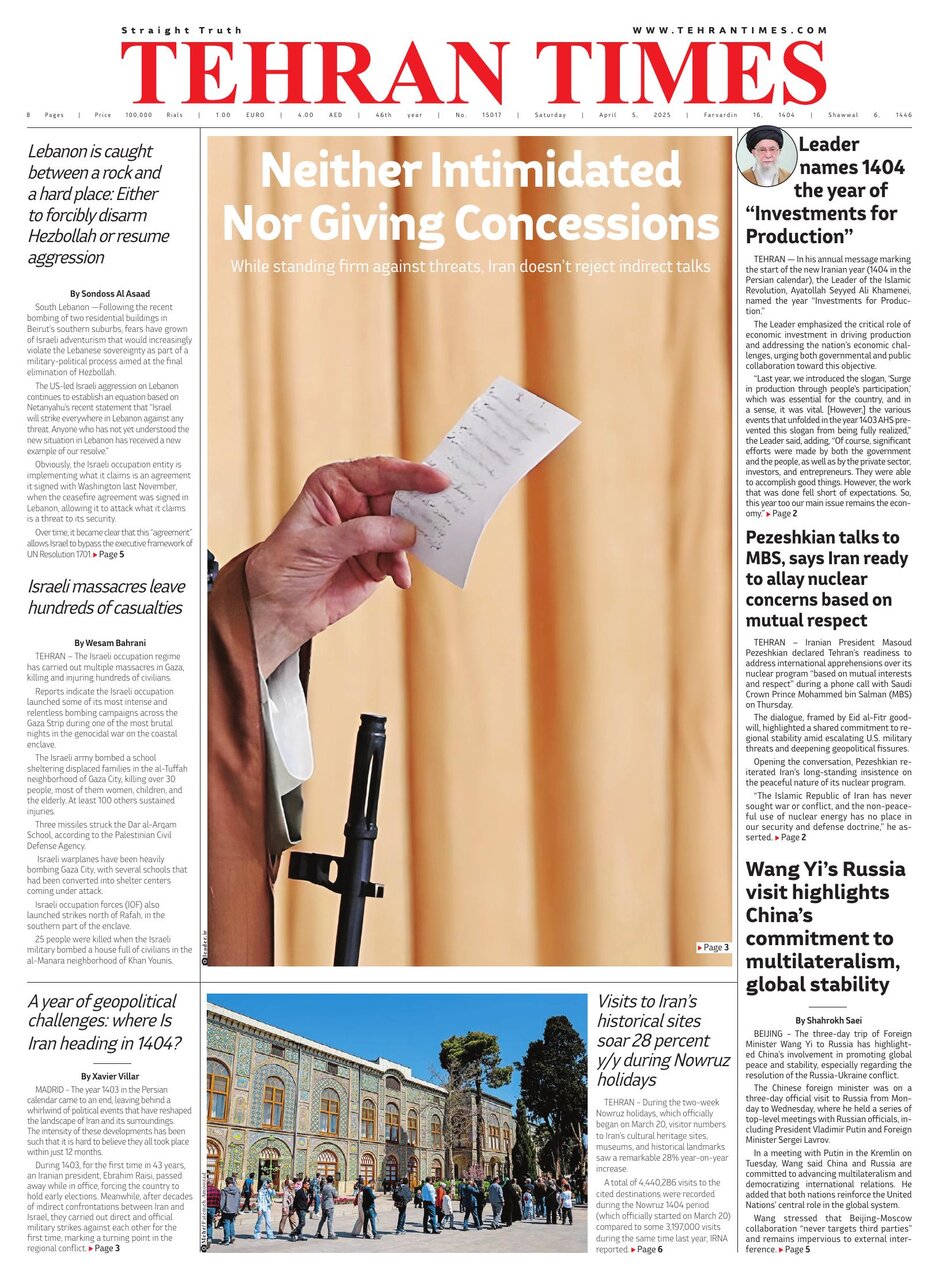
MADRID - The year 1403 in the Persian calendar concerned an end, leaving a whirlwind of political events that have actually improved the landscape of Iran and its environments.
The intensity of these developments has been such that it is tough to believe they all happened within simply 12 months.During 1403, for the first time in 43 years, an Iranian president, Ebrahim Raisi, died while in office, requiring the nation to hold early elections.
After years of indirect confrontations in between Iran and Israel, they carried out direct and official military strikes versus each other for the very first time, marking a turning point in the local conflict.In this regard, the year 1403 saw Iran desert its conventional doctrine of tactical persistence in favor of a policy of active deterrence.
From a strategic point of view, this shift suggests that any attack on its military personnel or installations will be met a direct response.The change in strategic doctrine took place at the start of the year, following Israels rocket attack on the building real estate Irans consulate in Damascus in April.
As an outcome of this attack, 7 members of Irans Islamic Revolution Guard (IRGC), including Mohammadreza Zadehi, were killed.Irans reaction to the attack can be found in the kind of the operation called True Promise, performed twelve days later on.
Militarily, the operation consisted of several drone and rocket strikes, preceded by a series of cyberattacks targeting the Zionist regimes power grid and radar systems, which led to prevalent power blackouts in the region.
The very first wave included lots of Shahed-136 kamikaze drones, with around 100 units in total.
This was followed by three additional strikes at periods of around 30 minutes, introducing between 400 and 500 drones in total.In May, the helicopter bring President Ebrahim Raisi, Foreign Minister Hossein Amir-Abdollahian, and other officials crashed in a mountainous area near the Azerbaijani border.
All passengers on board lost their lives.One of the key doctrines directing President Raisis foreign policy was great neighborliness, focused on strengthening ties with local nations.
This doctrine, which stays the foundation of Irans regional policy, should be examined along with 2 other fundamental tactical pillars of his administrations diplomacy: unwavering assistance for Palestine and the Axis of Resistance, which was a main concern of his federal government, and the Look to the East policy, developed to combine political, economic, and tactical cooperation with countries in the Eastern Hemisphere, particularly in Asia, while reducing dependence on the West.In June, the first round of the early elections was held.
Masoud Pezeshkian became the winner with 10.4 million votes (43.5% of the overall), followed by Saeed Jalili with 9.4 million votes (37.7%).
Mohammad Qalibaf secured 3.4 million (14%), while Mohammad Pourmohammadi received 200,000 votes (0.8%).
Since none of the candidates secured the needed bulk (50% plus one vote), a second round was held on July 5, in which Pezeshkian was elected as Irans new president after winning approximately 16.4 million votes.
Jalili, for his part, got around 13.5 million votes.Pezeshkians election was overshadowed by the assassination, on the very day of his inauguration, of Ismail Haniyeh, the head of Hamas political bureau, who had gone to as a welcomed guest to the Iranian presidents swearing-in ceremony.The method of targeted assassinations has actually been used by Israel for decades.
The Mossad, Israels intelligence company, has a long history of operations against Palestinian figures and other opponents of Israel in Europe, Syria, Lebanon, Egypt, and Iran.
Nevertheless, if the supreme goal is to damage groups opposing the colonization of Palestine, this technique has actually stopped working: every assassinated leader has had a follower, as was the case with Haniyeh.In September, electronic gadgets used by Hezbollah in Lebanon were targeted in coordinated surges, triggering many casualties, including civilians, and hurting Irans ambassador to Lebanon.That very same month, Hezbollah Secretary-General Hassan Nasrallah was assassinated in an Israeli strike in Beirut, in addition to Abbas Nilforoushan, the deputy head of operations for IRGC.
Hezbollah had actually challenged Israels military supremacy by developing a no-go zone within Israeli-occupied territory, requiring countless inhabitants to run away from the north of the country.In October, Iran launched True Promise II in retaliation.
According to the IRGCs declaration, nearly 400 ballistic rockets were fired at crucial military targets in Tel Aviv and other locations.
Iranian sources declared that over 80% of the rockets struck their targets and that the Mossad head office was destroyed in the attack.
The Negev Airbase, which housed F-35 fighter squadrons, was also hit.On October 26, Israel reacted with a series of airstrikes against Iran.
Iranian military sources reported that a lot of projectiles were obstructed, though minimal damage happened in Tehran, Khuzestan, and Ilam.In November, the most substantial event for Iran was Donald Trumps victory in the U.S.
elections.
In spite of speculation about internal divisions within his administration, Trump restored the maximum pressure policy against Iran simply months later.In December, the collapse of Bashar al-Assads government in Syria became one of the most major geopolitical threats to Iran in decades.Finally, on February 7, the Leader of the Islamic Revolution, Ali Khamenei, ruled out any possibility of dialogue with the United States as long as the maximum pressure policy continued.
Days before the years end, Trump threatened Iran following attacks on Yemen, alerting that any rocket launch from Yemen would be thought about an Iranian attack with severe effects.
The year 1404 is forming up to be a definitive duration for Iran.
The obstacles consist of Israels escalating military actions in the region, along with the U.S.
maximum pressure policy.
Nevertheless, chances also occur in the shift toward a multipolar world order, in which Iran might play a main role.

 20
20












